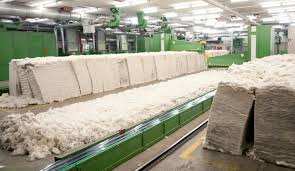Cotton, often hailed as the fabric of our lives is an integral part of our daily existence, woven into the fabric of clothing, linens, and textiles worldwide. Its journey from field to finished product is a fascinating process, intricately linked with agriculture, industry, and craftsmanship. In this article, we delve into the intricate steps involved in the production of cotton, while also exploring its significance in the realm of hotel towel manufacturer and luxury hospitality.
Cultivation and Harvesting
The journey of cotton begins in the fertile fields of regions blessed with the right climate and soil conditions. Cultivating cotton involves meticulous planning, from selecting the appropriate variety of cotton seeds to preparing the soil and managing pests. Cotton plants thrive in warm climates with moderate rainfall, requiring adequate sunlight and well-drained soil for optimal growth.
Once the cotton plants reach maturity, typically within six to seven months, they begin to bear fruit in the form of cotton bolls. These bolls contain the cotton fibers, which are carefully harvested using mechanical harvesters or picked by hand in regions where labor-intensive methods are preferred. Harvesting at the right time is crucial to ensure the quality and yield of the cotton fibers.
Ginning and Cleaning
After harvesting, the cotton bolls undergo the process of ginning, where the fibers are separated from the seeds and other plant debris. Modern gins employ advanced machinery to efficiently extract the fibers, a stark contrast to the laborious manual methods used in the past. Once ginned, the raw cotton undergoes rigorous cleaning to remove any remaining impurities, such as dirt, leaves, and short fibers.
Spinning and Yarn Formation
The cleaned cotton fibers are then subjected to spinning, a process that transforms them into yarns suitable for weaving or knitting. Spinning can be accomplished using different methods, including ring spinning, rotor spinning, and open-end spinning, each offering unique advantages in terms of yarn quality and production efficiency. The resulting yarns vary in thickness, strength, and texture, depending on the desired end-use.
Weaving or Knitting
The spun yarns are then woven or knitted into fabric, where intricate patterns and designs take shape. Weaving involves interlacing the yarns perpendicular to each other to create a stable and durable fabric structure, while knitting involves interlocking loops of yarn to form a flexible and stretchable fabric. Both processes require skill and precision to achieve the desired fabric characteristics, such as strength, drape, and breathability.
Fabric Finishing
Once the fabric is woven or knitted, it undergoes various finishing processes to enhance its appearance, texture, and performance. These processes may include bleaching, dyeing, printing, and coating, depending on the desired color, pattern, and functionality of the fabric. Fabric finishing not only adds aesthetic value but also improves the fabric’s durability, shrinkage resistance, and moisture management properties.
Hotel Towel Manufacturing
Cotton, with its exceptional absorbency, softness, and durability, reigns supreme in the realm of hotel towels. Hotel towel manufacturers source high-quality cotton fabrics to create luxurious towels that meet the stringent standards of the hospitality industry. These towels undergo additional processing steps, such as cutting, sewing, and hemming, to achieve the desired size, shape, and finish.
Hotel towel manufacturers cater to a diverse range of establishments, from boutique hotels to luxury resorts, offering customized solutions to meet their specific requirements. Attention to detail, consistency in quality, and adherence to sustainability practices are paramount in the production of hotel towels, ensuring a premium guest experience and long-term satisfaction.
Luxury Hotel Towels Wholesale:
In the competitive landscape of the hospitality industry, luxury hotels seek out exclusive and bespoke amenities to elevate the guest experience. Luxury hotel towels, with their plushness, absorbency, and aesthetic appeal, play a crucial role in shaping the perception of quality and refinement. Wholesalers specializing in luxury hotel towels collaborate closely with manufacturers to curate collections that reflect the brand identity and ethos of each hotel.
Wholesale transactions involve bulk orders of hotel towels, tailored to the specific requirements of individual properties. From selecting the finest cotton fabrics to customizing embroidery and packaging, luxury hotel towels wholesale encompasses a range of services aimed at exceeding the expectations of discerning clientele. Sustainability and ethical sourcing are increasingly prioritized in the luxury segment, with emphasis on organic cotton, eco-friendly dyes, and fair labor practices.
Conclusion
The journey of cotton from field to hotel towel manufacturer is a testament to human ingenuity, craftsmanship, and innovation. From the sun-drenched fields where it is grown to the elegant suites where it adorns bathrooms, cotton weaves its way into the fabric of our lives with timeless elegance and grace. As the hospitality industry continues to evolve, the demand for premium-quality hotel towels remains unwavering, driven by a commitment to excellence and a passion for hospitality that transcends borders and cultures.
FAQs
1. What are the main stages involved in the production of cotton?
The production of cotton involves several key stages, including cultivation and harvesting, ginning and cleaning, spinning and yarn formation, weaving or knitting, and fabric finishing. Each stage is crucial in transforming raw cotton fibers into the finished fabric used in various applications.
2. How is cotton cultivated and harvested?
Cotton cultivation begins with selecting the appropriate variety of cotton seeds and preparing the soil for planting. Once the cotton plants reach maturity, typically within six to seven months, they produce cotton bolls containing the fibers. Harvesting involves either mechanical harvesting or hand-picking, depending on the region and preferred methods.
3. What is ginning, and why is it necessary in cotton production?
Ginning is the process of separating the cotton fibers from the seeds and other plant debris contained in the cotton bolls. This step is essential to obtain clean and pure cotton fibers, free from impurities that could affect the quality of the final product. Modern gins use machinery to efficiently extract the fibers from the bolls.
4. How are cotton fibers transformed into yarns?
After ginning and cleaning, the cotton fibers undergo spinning, where they are twisted together to form yarns suitable for weaving or knitting. Different spinning methods, such as ring spinning, rotor spinning, and open-end spinning, are used to produce yarns with varying characteristics in terms of thickness, strength, and texture.
5. What is the significance of fabric finishing in cotton production?
Fabric finishing involves various processes, such as bleaching, dyeing, printing, and coating, to enhance the appearance, texture, and performance of the cotton fabric. These finishing steps not only add aesthetic value but also improve the fabric’s durability, shrinkage resistance, and moisture management properties, ensuring a high-quality end product.



